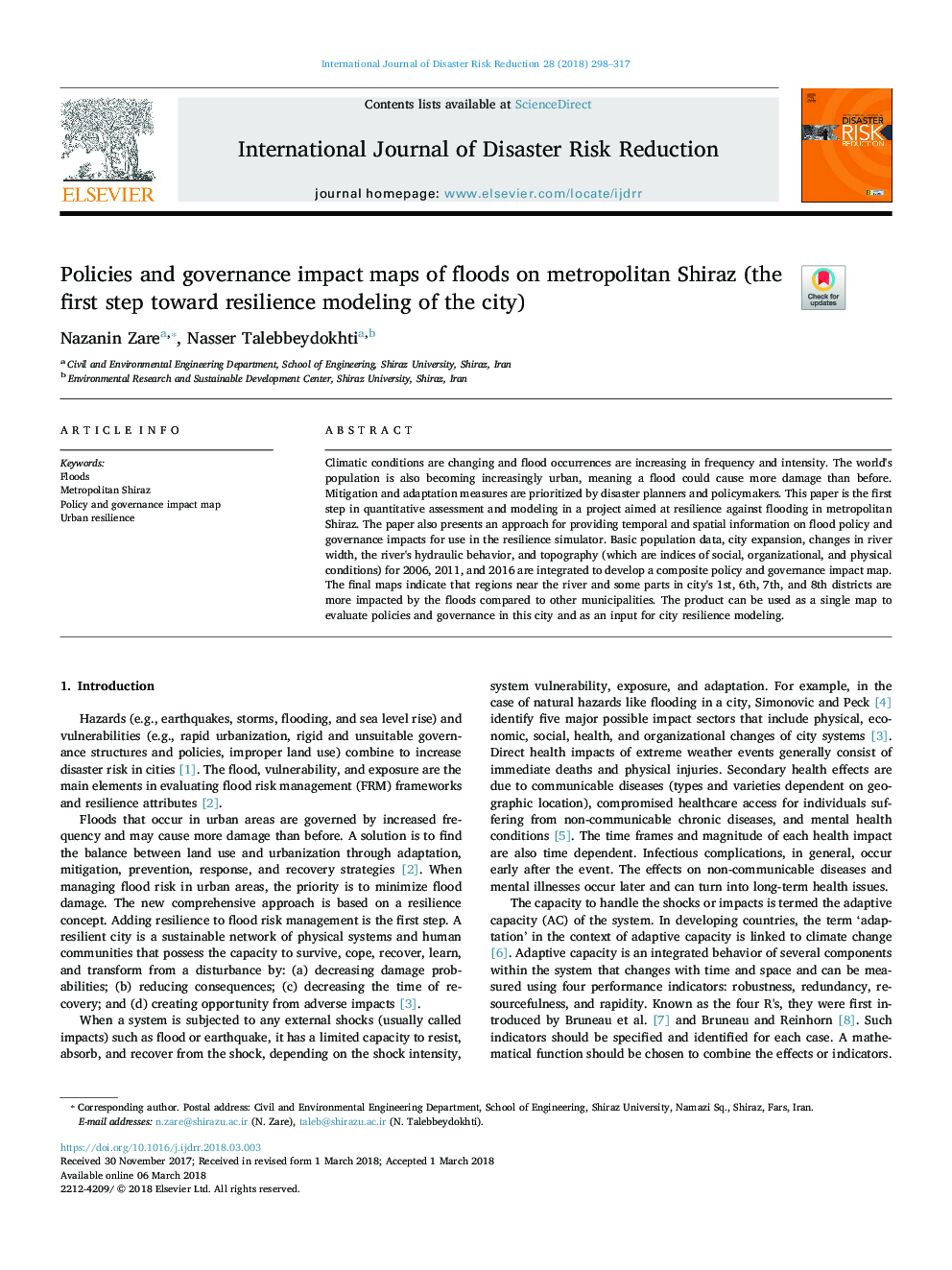| Article ID | Journal | Published Year | Pages | File Type |
|---|---|---|---|---|
| 7471580 | International Journal of Disaster Risk Reduction | 2018 | 20 Pages |
Abstract
Climatic conditions are changing and flood occurrences are increasing in frequency and intensity. The world's population is also becoming increasingly urban, meaning a flood could cause more damage than before. Mitigation and adaptation measures are prioritized by disaster planners and policymakers. This paper is the first step in quantitative assessment and modeling in a project aimed at resilience against flooding in metropolitan Shiraz. The paper also presents an approach for providing temporal and spatial information on flood policy and governance impacts for use in the resilience simulator. Basic population data, city expansion, changes in river width, the river's hydraulic behavior, and topography (which are indices of social, organizational, and physical conditions) for 2006, 2011, and 2016 are integrated to develop a composite policy and governance impact map. The final maps indicate that regions near the river and some parts in city's 1st, 6th, 7th, and 8th districts are more impacted by the floods compared to other municipalities. The product can be used as a single map to evaluate policies and governance in this city and as an input for city resilience modeling.
Keywords
Related Topics
Physical Sciences and Engineering
Earth and Planetary Sciences
Geophysics
Authors
Nazanin Zare, Nasser Talebbeydokhti,
